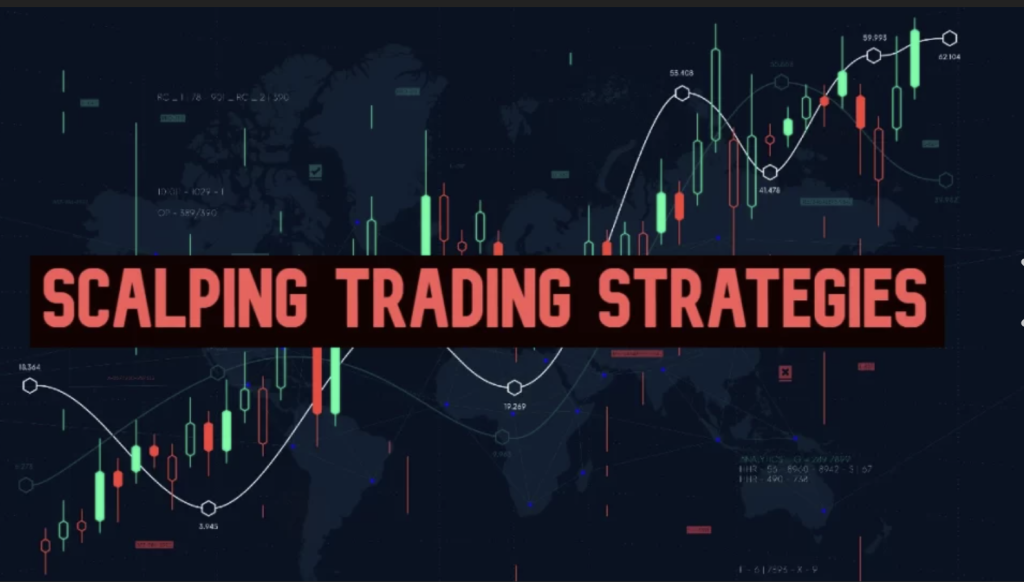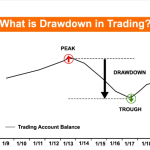
By ATGL
Updated October 23, 2025
Scalp trading is a demanding, precise strategy that involves executing multiple trades in a single session to capture small price movements. Traders who use scalp trading methods operate in a fast-paced environment — every millisecond can impact profit or loss, and technical precision matters more than market predictions.
This article explores how scalp trading operates across markets, the strategies traders use to identify high-probability setups, and the tools required to execute trades at the speed and accuracy this method demands.
What Is Scalp Trading?
Scalp trading involves executing multiple trades throughout the day to profit from small price movements. Unlike investors who hold positions for weeks or months, scalpers typically maintain trades for seconds to minutes, seeking to accumulate small gains that compound into meaningful returns over time.
The strategy requires you to identify liquid markets where bid-ask spreads remain tight, and order execution occurs without significant slippage. Most scalpers focus on highly liquid instruments such as major currency pairs, large-cap stocks, or liquid futures contracts. The trading price ladder displays real-time bid and ask prices, helping you visualize order flow and identify optimal entry points with precision scalp trading demands.
Scalpers typically target gains of five to 20 pips in Forex markets or fractions of a percentage point in equity markets. Success depends less on predicting major market moves and more on recognizing short-term imbalances between supply and demand.
How Does Scalp Trading Work?
While swing traders might hold positions for days to capture broader price movements, scalpers close all positions before the trading session ends. This approach eliminates overnight risk and allows traders to start each session without existing exposure.
Scalping methods rely on technical analysis, not fundamental analysis. Scalpers examine price action, volume patterns, and order flow to make split-second decisions. The strategy functions most effectively in markets with high liquidity and tight spreads, where large order volumes allow traders to enter and exit positions without significantly impacting prices.
Scalpers need direct market access, low-latency connections, and rapid order execution capabilities. The difference between long-term and short-term investment strategies comes down to speed: scalpers measure opportunity in ticks and seconds, while investors measure success in quarters and years.
Common Scalp Trading Methods and Setups
Successful scalpers use several proven strategies to identify high-probability trade setups.
Breakout Scalping: This approach captures momentum when price breaks through established support or resistance levels. Traders identify consolidation patterns where price compresses within a narrow range, then enter positions when price breaks decisively above resistance or below support. Scalpers place stop-losses just beyond the breakout point and target quick profits as momentum traders pile into the move.
Range Scalping: Range scalping capitalizes on price oscillations within defined boundaries. When markets trade sideways without a clear directional bias, scalpers buy near support and sell near resistance. This method pairs well with oscillators such as the Relative Strength Index (RSI) or the Stochastic Oscillator, which help identify oversold conditions near support and overbought conditions near resistance.
Momentum Scalping: Momentum scalping focuses on capturing strong directional moves driven by market participants rushing to enter positions. Scalpers identify these opportunities using technical indicators for day trading, such as the Moving Average Convergence Divergence (MACD) or RSI. When these indicators signal strong momentum, traders enter in the direction of the move with tight stop-losses.
Moving Average Crossovers: Moving average crossovers provide signals when fast-moving averages cross above or below slower-moving averages, indicating potential micro-trend shifts. Scalpers commonly use combinations like the 5-period and 15-period exponential moving averages on one-minute or five-minute charts. When the faster average crosses above the slower average, it suggests upward momentum; when it crosses below, it signals downward pressure.
Scalping Method in Forex Trading Explained
Forex markets provide ideal conditions for scalp trading due to their exceptional liquidity, 24-hour availability, and typically narrow spreads on major currency pairs. The EUR/USD, GBP/USD, and USD/JPY pairs attract the most scalping activity because their high trading volumes allow large position sizes without significant price impact.
Successful scalping in Forex trading requires access to Electronic Communication Network (ECN) brokers that offer direct market access and minimal spread markups. These brokers route orders directly to liquidity providers, reducing execution time and slippage. Many Forex scalpers focus on trading during overlap sessions — particularly the London-New York overlap — when liquidity peaks and price movements become most predictable.
The Forex market’s pip-based profit structure suits scalping particularly well. A trader capturing just five pips on a standard lot (100,000 units) generates $50 in profit, and executing this successfully multiple times per session compounds returns significantly while maintaining trading risk management through tight stop-losses.
Is Scalp Trading Profitable (and What Traders Should Expect)?
Scalp trading can generate consistent profits for disciplined traders who master execution speed, technical analysis, and risk management. However, profitability depends on several critical factors that separate successful scalpers from those who struggle.
Transaction costs are the primary challenge. Every trade incurs commissions, spreads, and potentially exchange fees. Traders must calculate their break-even point and structure strategies accordingly.
In fast-moving markets, the price at which an order executes may differ from the intended price, especially with market orders. Successful scalpers typically maintain win rates between 55% and 65%. Profitability stems from maintaining favorable risk-reward ratios and exercising strict discipline. A scalper risking five pips to gain eight pips, executed with a 60% win rate, generates positive expectancy over sufficient trade volume.
Is Scalp Trading Legal and Suitable for All Traders?
Scalp trading operates legally in most regulated markets, including U.S. equities, futures, and Forex markets. However, some retail brokers prohibit or restrict scalping in their terms of service, particularly those operating on dealing desk models. You should verify that your broker explicitly permits scalping before implementing this strategy.
Suitability depends on individual temperament, time availability, and skill level. Scalp trading demands full-time attention during trading hours, rapid decision-making under pressure, and emotional discipline to execute mechanical strategies without hesitation. This approach is suitable for technical analysts comfortable with chart patterns, indicators, and order flow analysis. Conversely, individuals seeking more relaxed trading schedules or those who prefer fundamental analysis may find longer-term strategies more appropriate.
Risk Management and Tools for Scalp Trading Success
Effective risk management distinguishes profitable scalpers from those who deplete trading accounts. Stop-loss orders form the foundation of scalp trading risk management. Every trade should include a predefined maximum loss, typically between 0.5% and 1% of account capital. Scalpers place stops just beyond technical levels—below support for long positions or above resistance for short positions.
Profit targets should align with market conditions and average true range. Setting targets at twice the risk amount creates a 2:1 reward-risk ratio that allows profitability even with a 50% win rate. Most professional scalpers risk 0.5% to 1% per trade, adjusting position size based on stop-loss distance to maintain consistent risk across different setups.
Overtrading is a common pitfall. Successful scalpers maintain predetermined daily loss limits and stop trading once they are reached, preventing emotional decision-making from compounding losses.
Level II data displays real-time order book depth, showing where large buy and sell orders are located. This information helps scalpers anticipate support and resistance levels and identify potential order flow imbalances. Trading platforms with customizable hotkeys enable one-click order placement, modification, and cancellation — capabilities essential for competing in fast-moving markets.
Develop Your Scalp Trading Approach With Professional Guidance
For traders interested in exploring structured trading methodologies that complement short-term strategies, Above the Green Line provides comprehensive educational resources and proven investment strategies designed to help market participants develop consistent approaches across different time frames and market conditions.






